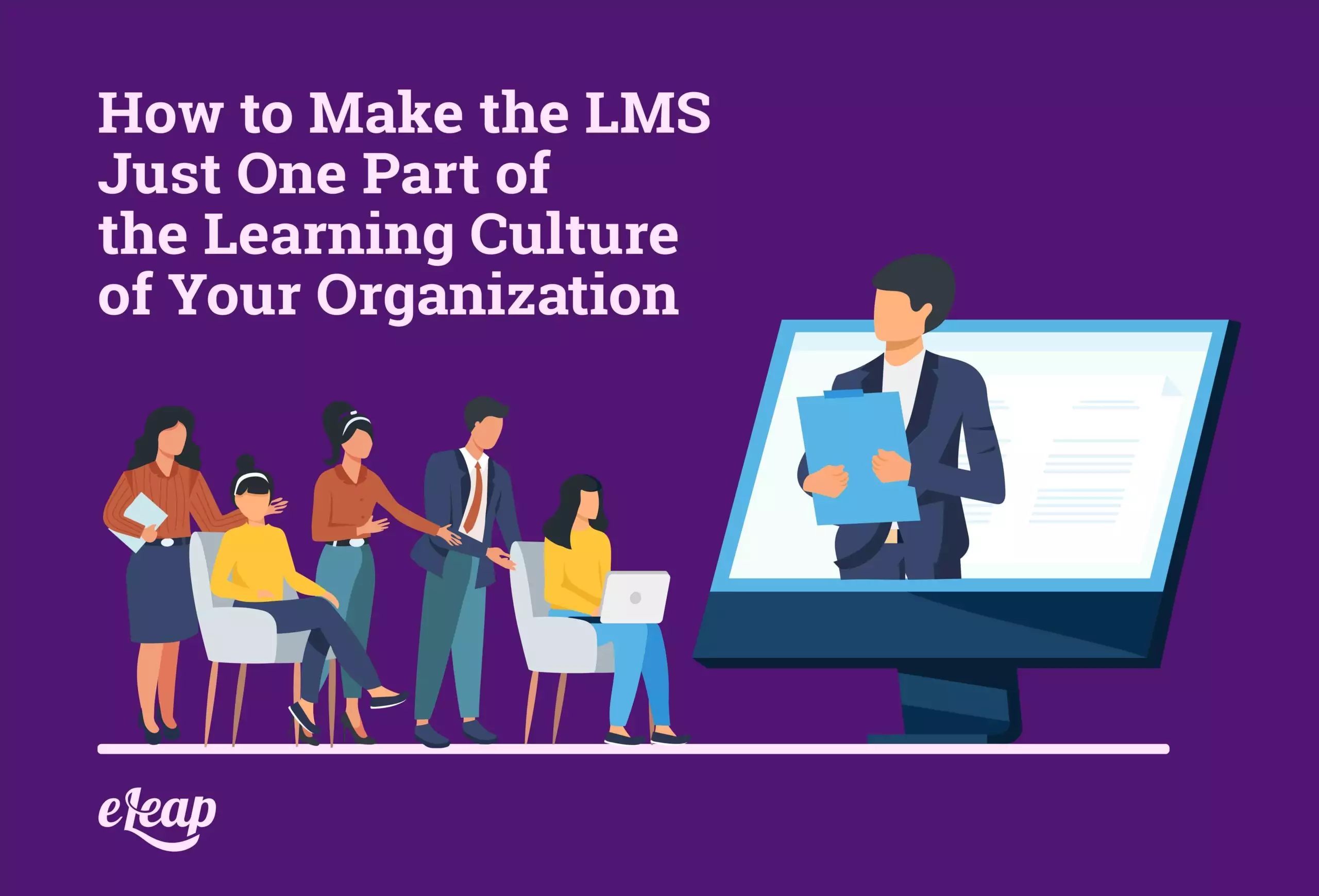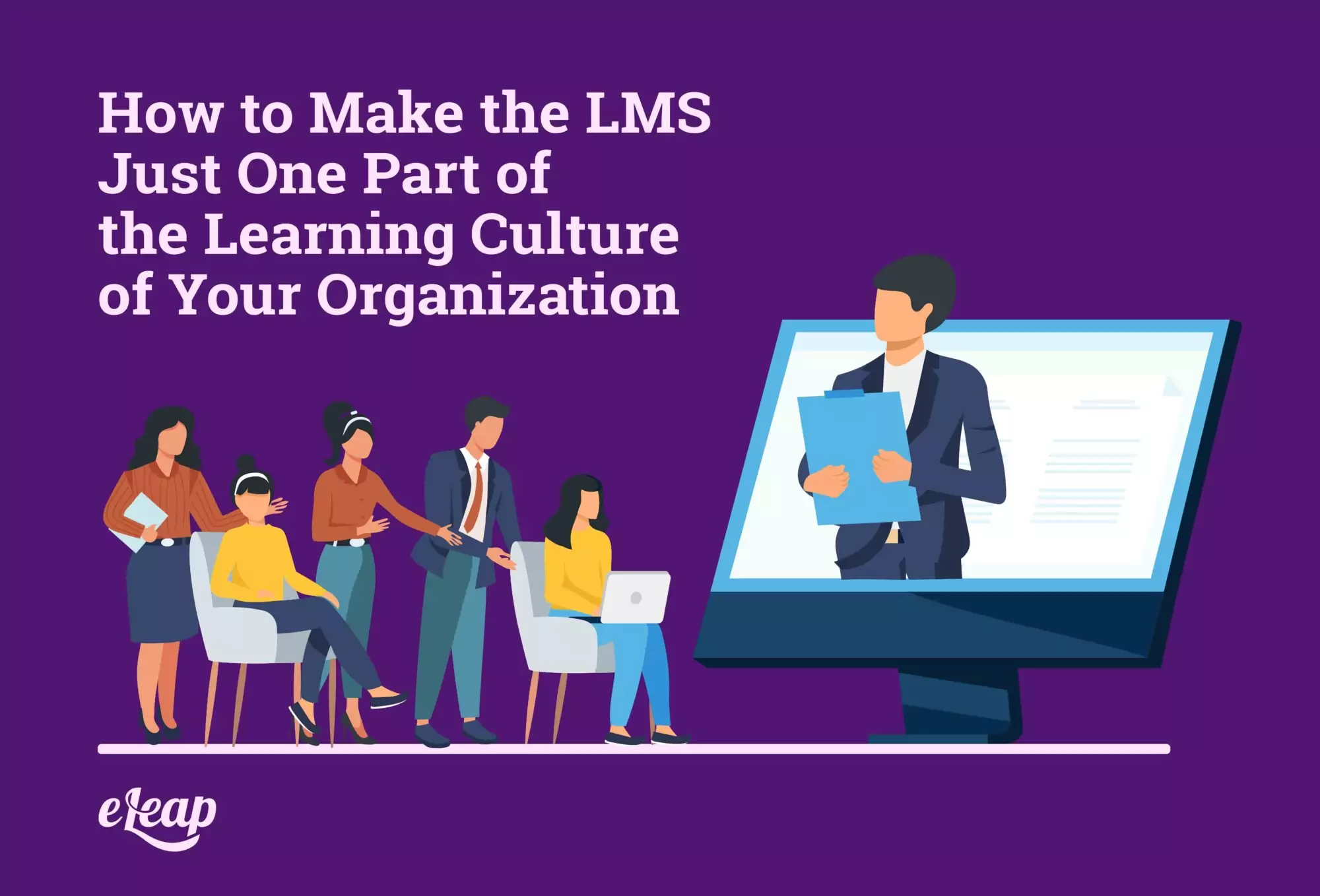How to Make the LMS Just One Part of the Learning Culture of Your Organization

In modern business, culture plays a huge role in the success of an organization. Not only are employees demanding it, but companies are seeing that embracing a more engaged, interactive culture is helping the organization as a whole, in more ways than one. There are several types of cultures that a company can focus on when they want to make improvements. One of the most important, and perhaps most profitable, is taking the time to create a learning culture.
Just what does “learning culture” mean, though? And is it the only culture that you can adopt? Most organizations adopt a few different ideologies or cultures, based on their goals and future intentions. Today, learning and engagement are at the top of most employers’ lists, and the modern learning management system is but a small part of those cultures.

The LMS as a Resource
Choosing and/or creating an LMS is a big part of getting the learning culture off on the right foot. It’s only one part of the overall culture that you’re looking to create, but it’s a big one. Therefore, organizations will want to make sure that they understand what LMSs offer and consider the option between open-source, hosted, and other options for creating a robust LMS for employees and new hires to learn everything they could possibly want to know.
The modern LMS is no longer a static training module or limited educational tool. Standalone learning is out and dynamic, collaborative learning is in—that’s the first thing organizations need to sort out and transition into, and doing so requires the appropriate LMS to deliver the education that employees need. Consider how the LMS can offer collaborative learning opportunities, reward goal achievements and ensure that everyone knows and shares your value of learning as part of the company culture.
Other Ways to Encourage a Learning Culture
Besides the LMS that you choose, there are plenty of actionable ways that organizations can promote a learning culture. Take the time to think about your own strategy for fostering a culture of learning and development and keep the best practices below in mind.
Create personalized learning paths and goals
What better way to promote learning and development than to give everyone their own personalized learning and development path? This should be part of the onboarding process. It’s even better if you already have standard paths and goals in place for certain positions, but that’s not a requirement. Just make sure that you tailor learning goals to each employee and you will impart the value of learning to every single one of them.
Make learning and development core values
Every company has core values that are essential to its operation and that employees must also adopt and embrace to deliver their best performance. Put learning and development high on that list of core values and it will be easy to encourage that quest for knowledge and improvement that successful organizations today thrive on.
Lead by example
The biggest complaint of employees regarding leadership is the difference between those who lead by example and those who just bark orders and expect people to follow them. Organizations that have people in positions of power who are also leading by example will ensure that employees develop the same thirst for knowledge and desire to share information with others that you see in your existing team.
Encourage knowledge sharing
This is also a good time to see how your LMS can help you promote knowledge sharing and information dissemination between employees. It will be important to encourage the use of available resources to share information with other employees. Utilize the discussion feature of the LMS or another type of platform where your team can engage to cultivate an ongoing discussion of knowledge sharing, SMEs (subject matter experts), and collaborating for the greater good of the organization.
Start incorporating learning at the point of hire
It doesn’t make sense to wait until your new hires have been on the job for a week to inundate them with a bunch of static, overwhelming training material. However, it also doesn’t make sense to have people completing learning modules before they’ve even been fully onboarded. What you need to do is find the balance by making sure that you’re hiring people who already consider learning and development core personal and professional values.
Make sure training is meaningful
Employees are tired of training. They’re tired of the same old onboarding videos and quizzes. They want to be part of something more—that can be your organization if you take the time to create meaningful training opportunities. If you take the time to develop training that is meaningful and valuable to your people, they will respond in kind and eagerly embrace the learning culture.
The Future is Learning-Focused
The way that employees learn and grow within the workplace has changed much in the past few years. It’s gone from getting the learning out of the way to creating a continuous learning environment where people enjoy learning and do it freely to help themselves, as well as the greater organization as a whole. Developing a culture of learning is something that takes time and deliberate effort. It won’t happen overnight. However, if you do it right, it will happen and you’ll have a team with a whole new lease on their roles and how much learning is involved in them.
Culture is essentially the glue that holds organizations together. It is what essentially creates the unspoken “code” of how to behave, how to work, and how to interact with others. This is what motivates and drives employees. Every organization has a culture—if you haven’t taken the time to define yours, that doesn’t mean it doesn’t exist. It just means that it’s out of your control. Take back control by contacting the team at eLeaP today for a free consultation on how to create a learning culture and how to utilize the right LMS to get things moving.